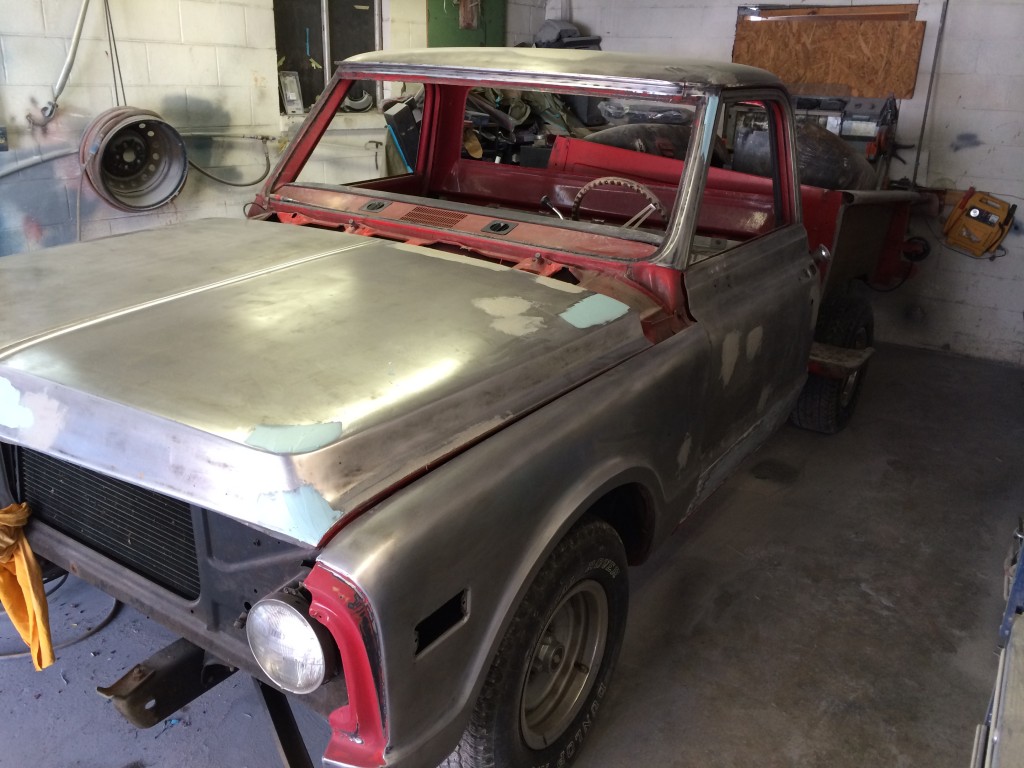
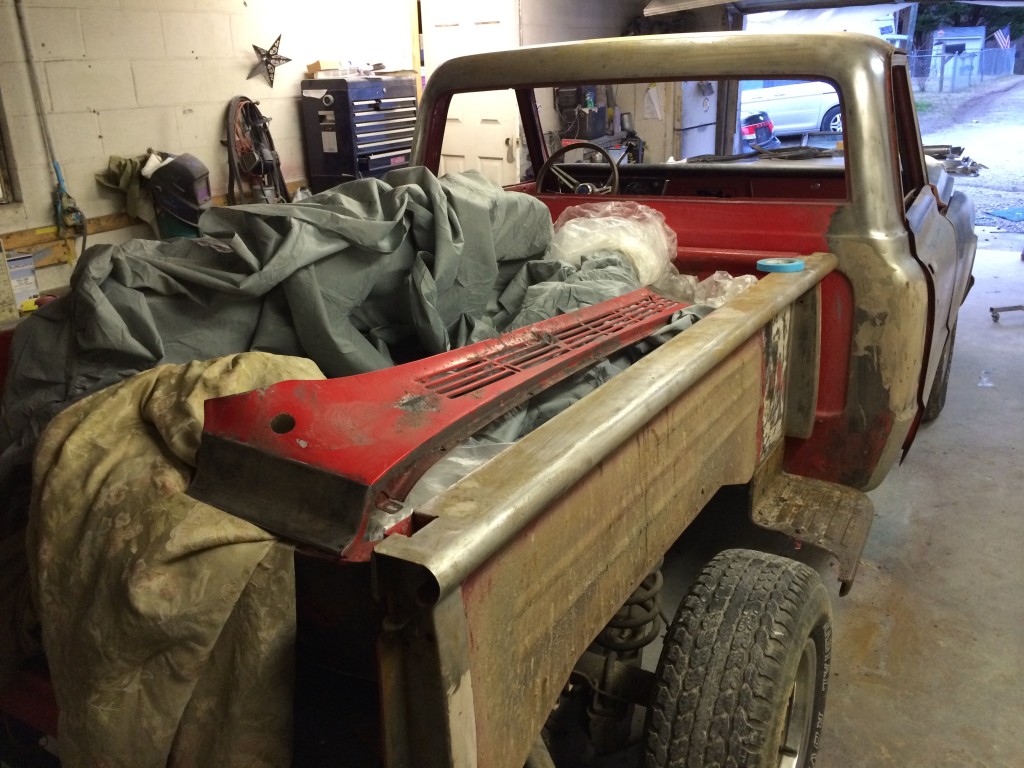
Nothing scary behind the fenders. Thank God. Further along in the process.
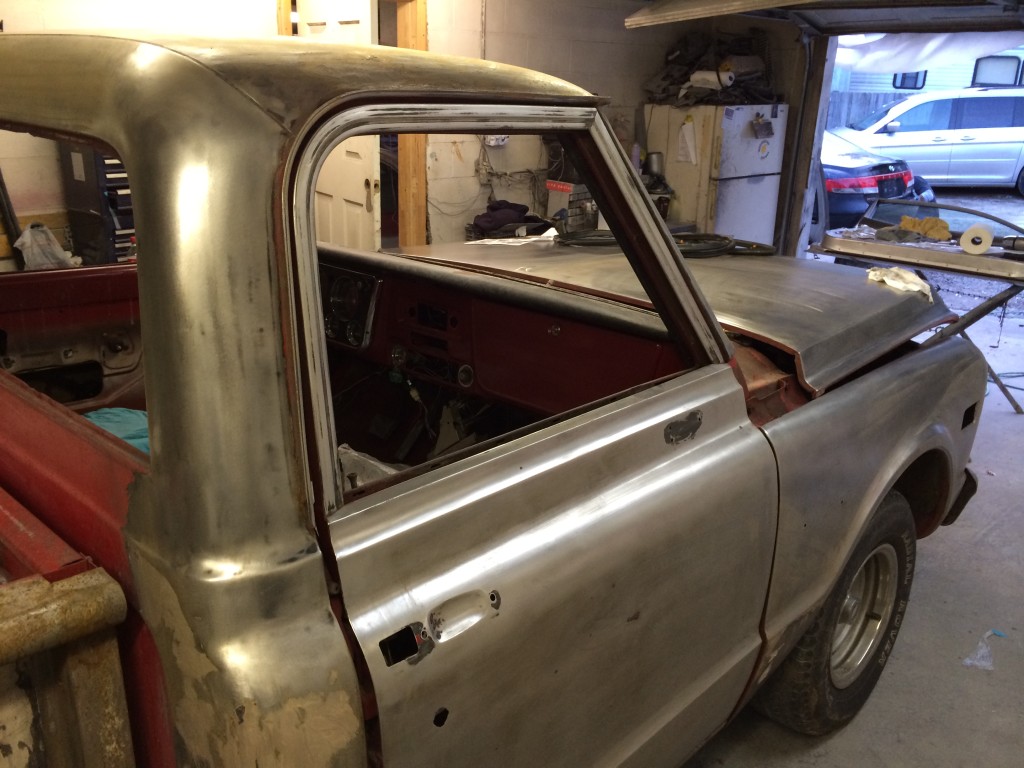
7125 Old Stage Road Raleigh NC 919-322-0197


Nothing scary behind the fenders. Thank God. Further along in the process.

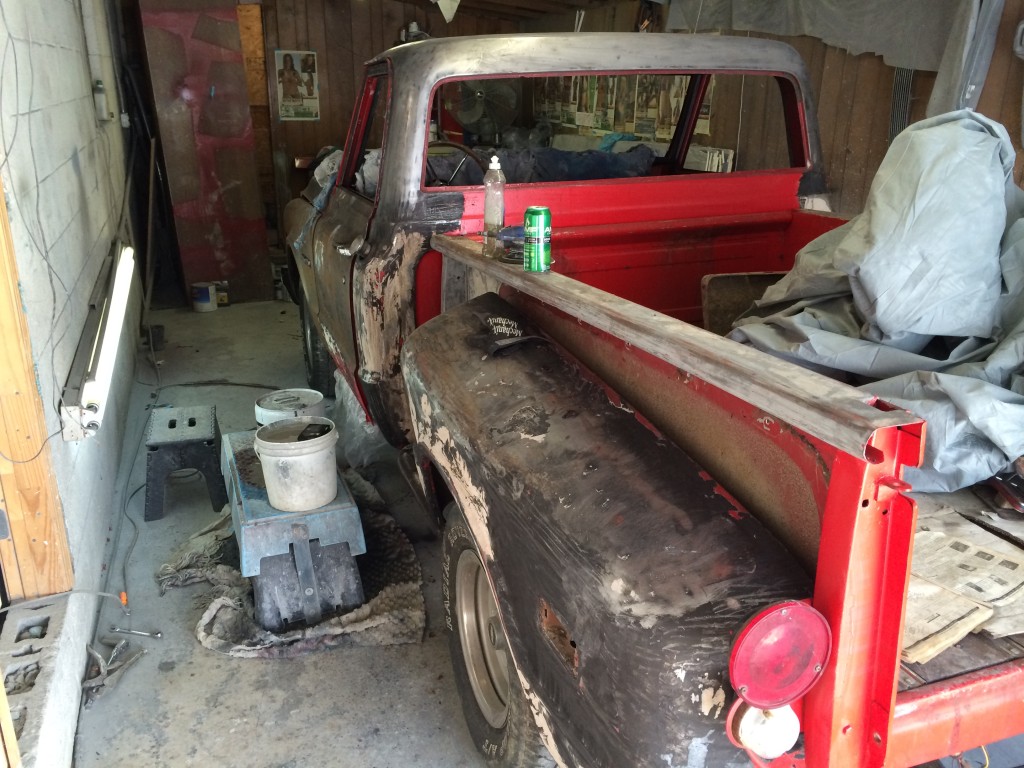
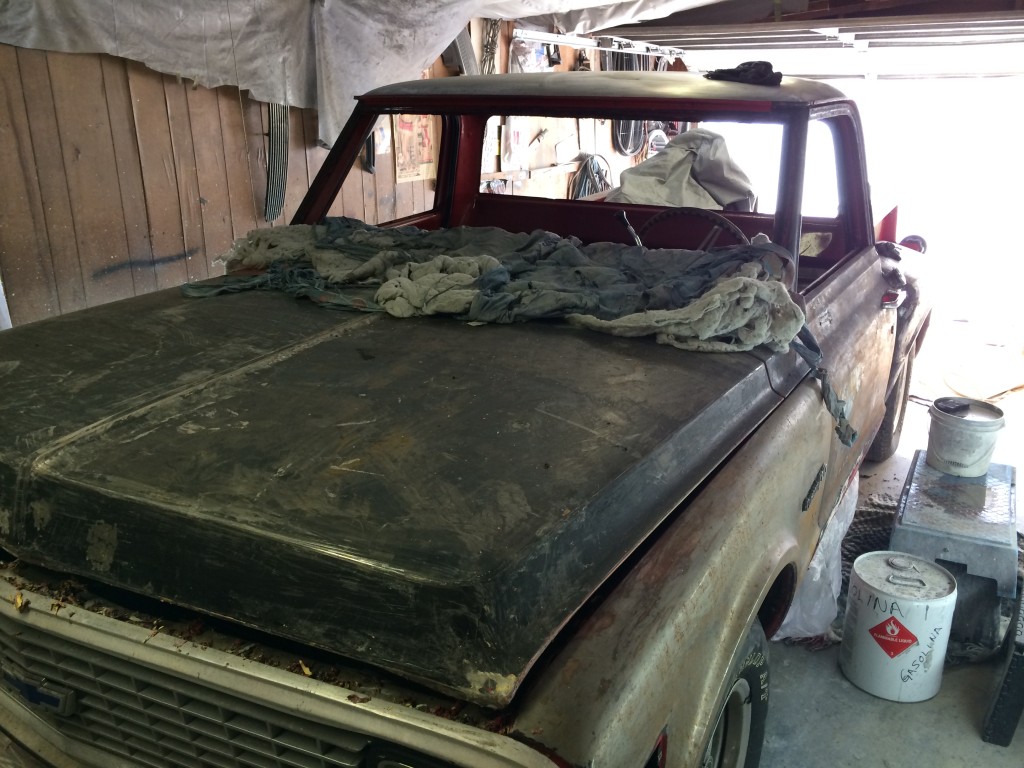 So began a process where every week or so I would stop by to see the truck and how it was going. It was neat to see the truck taken down to base metal and find out what was underneath. Neat and scary because I didn’t know what we might find once we stripped off the primer. Rust, bad repairs, etc. Luckily the truck was as clean as it could be and all was well. A chemical stripper was used to strip the truck.
So began a process where every week or so I would stop by to see the truck and how it was going. It was neat to see the truck taken down to base metal and find out what was underneath. Neat and scary because I didn’t know what we might find once we stripped off the primer. Rust, bad repairs, etc. Luckily the truck was as clean as it could be and all was well. A chemical stripper was used to strip the truck.
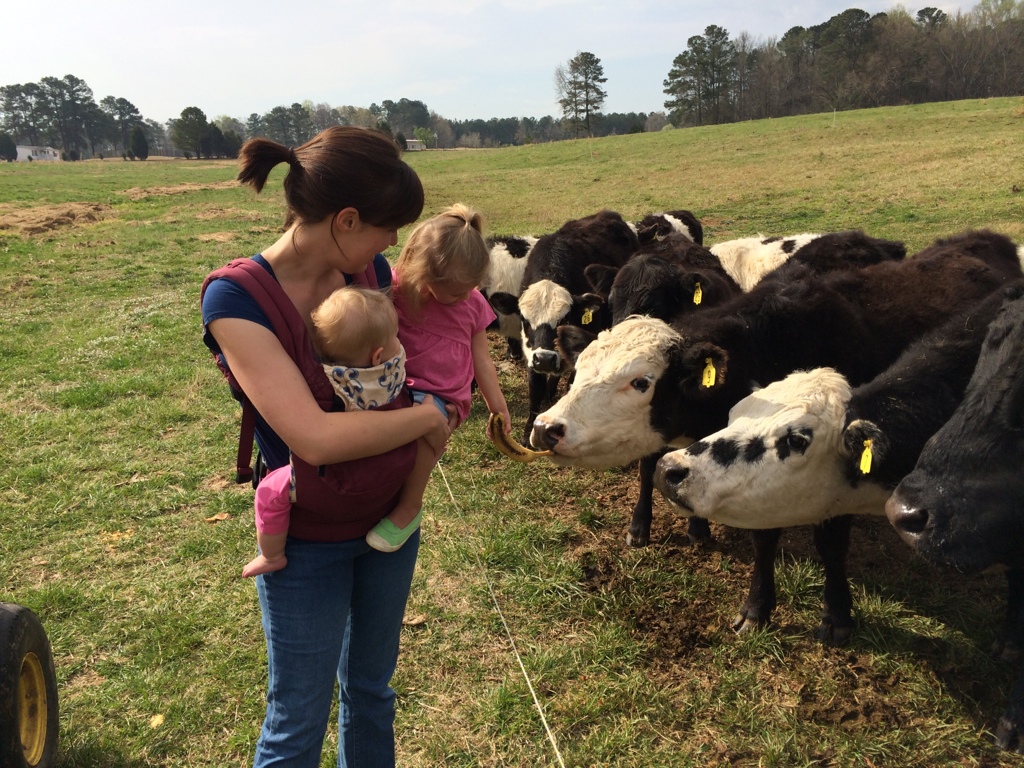
We were fortunate to have a new friend visit the farm with her two kids for a tour. During and then after the tour I was asked some questions about our milk cow that I promised I would answer and the best way to answer is probably here on the blog.
Gwen had lots of questions about food and health, as most new parents do. In fact, one reoccurring theme I’m noticing as I give tours of the farm is that people are coming to natural food when they have kids. It’s interesting that we’ll cram most anything in our own mouths, but once we have a little bundle of drool and poo, oh wait, I meant bundle of joy to take care of, we change our habits. As the father of three I can say it’s exactly the same with us. I was so bad taking care of myself but for my kids I work my butt off.
Back to Gwen, one thing she was particularly interested in was raw milk and its different forms. Is organic milk close enough to raw? What about raw but from grain fed cows? How much pasture is enough pasture to not be an issue. These are all good and intelligent questions, ones that aren’t made any easier by the misinformation provided in our marketing systems for food.
I had taken some time to write-up my thoughts to try to help Gwen and was half way through a blog post about it when I opened my latest issue of The Stockman Grass Farmer and found an article by Kate Yegerlehner on grass-fed raw milk. By the way, you have to love a family that holds on to their old world spelling of their name and doesn’t Americanize it. My wife’s name (no not SWMBO, that’s what I call her) is very German and she’s quite proud of it.
So rather than write up my drivel for Gwen, I wrote to Kate instead and asked her if I could reprint her article here on our blog with a link to her own website, which you should definitely visit because she’s been gracious enough to post all of her very good Stockman Grass Farmer articles on her website along with a blog she maintains. Kate was very gracious and gave me permission to use her article. I was going to simply link to her article but they are files that you have to download to read so I’m going to reprint the article inline below so it’s easier to read. If you find value in what Kate has to say, she has a lot more on her website linked above.
Before I get to the article, I’d like to point out a few things. In the fifth paragraph, Kate notes that research has shown that it takes quite a while to have a “healthy profile” in a cow, but only a short time to loose it. 25 days vs. 5. This matches research I learned about in a grazing school on backgrounding cattle during the winter. Backgrounding is when you bring them into a feed lot and off of pasture when there isn’t any forage available, usually in the winter. Technically the cows are still grass fed (marketing, eh?) but the research shows that the various measures of health like Omega 3 vs 6 change significantly during the backgrounding time and not for the good. And like the research that Kate references, it only takes a short time for the metrics to worsen and quite a bit longer for them to return to “pastured” beef quality. So your grass fed cow you purchased in April, if it was backgrounded from January to March 15th, it has the health profile closer to a grain fed cow than to a grass fed cow. That’s why Sam won’t be going to Chaudhry’s until June, because he’s been on hay all winter and I want a fresh grass cow. Plus they are all eating spring onions right now. Onion flavored beef, yuck.
All of this goes to Gwen’s question on Organic vs. pastured raw milk. Which is better? Based on the below article, and what I’ve learned over time, I’d try to get pastured milk over Organic as Organic still can mean grain fed and grain has a measurable difference in the health profile of the milk. So once again, it’s better to know your farmer than it is to know your brand.
The Big Deal about 100% Grass-fed
By Kate Yegerlehner
I consider myself one of the lucky ones. I have consumed raw milk for most of my 34 years of life, because I grew up as the daughter of a dairy farmer. There is no doubt in my mind that having access to fresh milk is one of the things that has contributed to my overall health, although saying so as a seller of said milk probably is illegal (Just ask Diamond Foods how the FDA felt about their walnut health claims).
Since the fall of 1999 our cows have been 100% grass-fed. Before that, our management strategies had been through several changes. In the 1980’s they received a total mixed ration, aided by all the expensive equipment necessary for such a diet. Harvestore silos, choppers and wagons, feed mixers…a beautiful collection of things that rust and break down. When we implemented MiG in the early 1990’s, we continued supplementing the cows’ diet with some grain until 1999 (we also grew corn and soybeans until 1999). In 2000 we ventured into direct marketing (we chose this route as opposed to expanding to remain viable selling in the commodity market), and decided that converting our dairy to 100% grass-fed would put us in a more specialized niche market.
I drank our raw milk during all of these stages. It hasn’t always been 100% grass-fed, but I have no recollection of ever being sick and attributing it to tainted raw dairy. I do know that as a kid I had some recurring bouts of things like tonsillitis (never had the tonsils removed though, and I’m fine now!) and strep throat, as well as the occasional bug that was going around. Yet I’m pretty sure I can count on one hand the number of times I have actually been ill in the past 12-14 years since we converted to 100% grass-fed and I moved back home from college. Coincidence? Could be multiple factors involved of course, but I am certainly willing to give at least some credit to regularly eating grass-fed dairy and beef.
Considerable scientific evidence has revealed that the milk (and the muscle fat in meat) from totally forage-fed cows contains elevated levels of certain nutrients such as conjugated linoleic acid (CLA), omega-3 fatty acid, and fat-soluble vitamins. CLA has been shown to inhibit tumor growth. Omega-3 appears to play a role in preventing obesity. Vitamins A, D, and E, which abound in grass-fed meat and milk, play critical roles in immune function among other things. And these are just some highlights.
Ruminants on fresh forages have the highest levels of these nutrients. Depending on where you live, there may be times of the year when you must feed stored forage, but it will have an impact on the nutrient profile of the milk and meat. And feeding even small amounts of grain will significantly alter the levels. The response is seen more quickly in the milk than the muscle fat. Dr. Tilak Dhiman of Utah State University found that it took a ruminant 25 days on pasture to reach its peak CLA level in the milk, but only 5 days after being removed from fresh pasture the levels dropped back down.
In addition to the extra good things found in pastured animal products, another important benefit is what is missing. Milk and meat from animals on a total-forage, no-grain diet appear to have a built-in protection against pathogens. The more starchy grains a cow eats, the more acidic her body becomes. Science has begun to show that disease initiates in an acidic body. A slightly alkaline environment in the body prevents it. I sometimes tell our customers and school tours that a cow eating a lot of starchy grain would be comparable to us eating a lot of sugar. It makes the body acidic and sets us up for a whole host of maladies! Can we handle small amounts of sugar and still be pretty healthy? Most of us can. A cow can handle a little grain too…but what grain would be naturally occurring in the grazer’s diet? The seedhead on the maturing grass plant! If the cow is healthier, it stands to reason the milk and meat would be that much healthier, too, and this is one of the biggest reasons why we choose not to feed grain to our cows.
Raw milk has many enzyme-based pathogen killers (including lactoferrin, xanthine oxidase, lactoperoxidase, lysozyme and nisin), but all enzymes are destroyed at the temperature required for pasteurization. Through the aid of BSK labs in Fresno, Organic Pastures of California had their organic raw milk injected with various pathogens, finding that the pathogens would not grow, and in fact diminished over time. This experiment was with raw milk from cows on pasture. I have a notion that the closer to “perfection” a cow’s diet gets (her God-ordained pasture diet with opportunity to browse on occasion, grown on healthy soils with ample minerals in balance and microbes, earthworms, and beneficial insects abounding), the more likely those pathogens are to either bow in submission or turn and run the other direction!
Jo Robinson, author of Why Grass-fed Is Best!, explains that grain-fed cattle are about 315 times more likely to harbor E. coli 0157:H7 than grass-fed cattle! She says the reason for this is two-fold. First, grass-fed animals have an overall lower count of bacteria. Second, in the grain-fed digestive tract, these pathogens adapt and become resistant to the more acidic environment. It’s not hard to imagine that during the slaughtering and butchering process, the meat could easily become tainted with these disease-causing bacteria. And to put the nail in the coffin, because they are acid-resistant they will be more likely to survive our own gauntlet of digestive juices as well. Get that pH up in your cows and you’ll nearly eliminate that problem!
Some people think it’s not possible to milk cows on total forage and keep them alive. Well, it depends on the adaptability of the cows and the quality of your forages, but it certainly is possible. We’ve not fed a speck of grain to any cow on our farm in 14 years (I should also mention we are seasonal). There have been some hard knocks along the way while learning how to manage pasture quality, soil building, and animal performance at the same time, to be sure. But we have no desire to turn back from this journey we’ve found ourselves on. A journey where our passion for people, animals, and the environment constantly intersect. We’re continuing to learn and adapt. The hard knocks could have been enough to make us question whether we should just forget it and go back to “Egypt”, like the ancient Israelites wanted to when they faced challenges in the wilderness as God and Moses led them towards the Promised Land. But life as a slave isn’t as much of a life as fear of the unknown would have us believe! And so we press on.
So if it’s true that cows are grazers designed to digest forages, and if it’s true that what they eat affects the nutritional composition of the meat and milk, and if research is indicating that an all-forage ration for the cow translates to better health for the person who drinks the milk or eats the meat, but your herd is still dependent on grain supplementation…what are you waiting for? What steps could you start taking to make your product even better?
The demand for real, healthy food continues to increase. We as farmers are responsible to the people we serve. We must do everything we can to produce food that is clean, safe, and life-enhancing. We give our customers the right and responsibility to ask questions of us and even inspect the farm. They trust us to provide them with healthy products, and we always seek to honor that trust. The relationships that develop when we interact with each other in this way play a vital role in keeping small businesses alive…and this may prove to be truer than ever as the future unfolds.
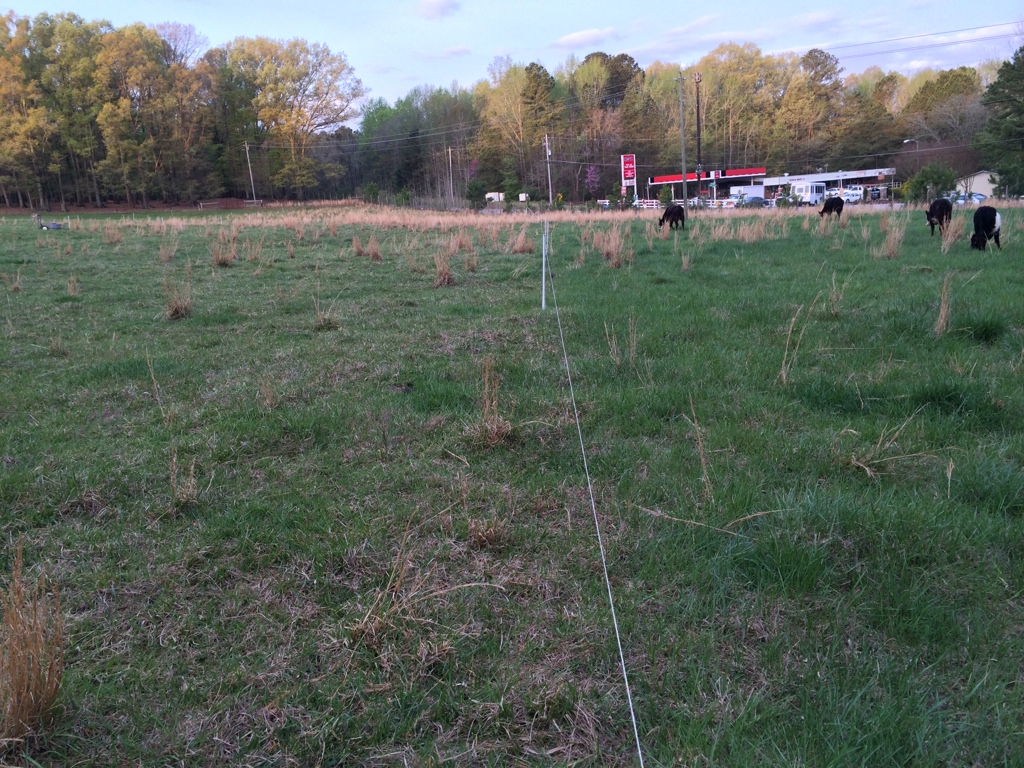
Late March we started the cows on paddock shift again at the top of our largest pasture. We’ve been working them steadily towards the other end and today we’ve arrived. When we first started there was just a bit of green, no real grass. We also made our paddocks small, maybe 18 yards wide by the full length of the pasture long. As we arrive at the end, with three weeks more growth on the grass, we are at 39 yard wide paddocks and the cows are still over grazing. About 90% of the grass is grazed and they are still reaching under the wire for more. A good portion of the grass has been second grazed. We have the four pond paddocks coming up, and then the front pasture which Sam and Dottie are sequestered in currently while Dottie dries off, I hope. That means we will be back to the winter paddock in about a week. It’s slowly coming back after all the traffic this winter. Hopefully it will have recovered by the time we get there because I need the cows to stay a while so our first paddock in this pasture will have time to recover. Soon we will be in the spring flush, with more grass than we know what to do with but it seems a long time coming.
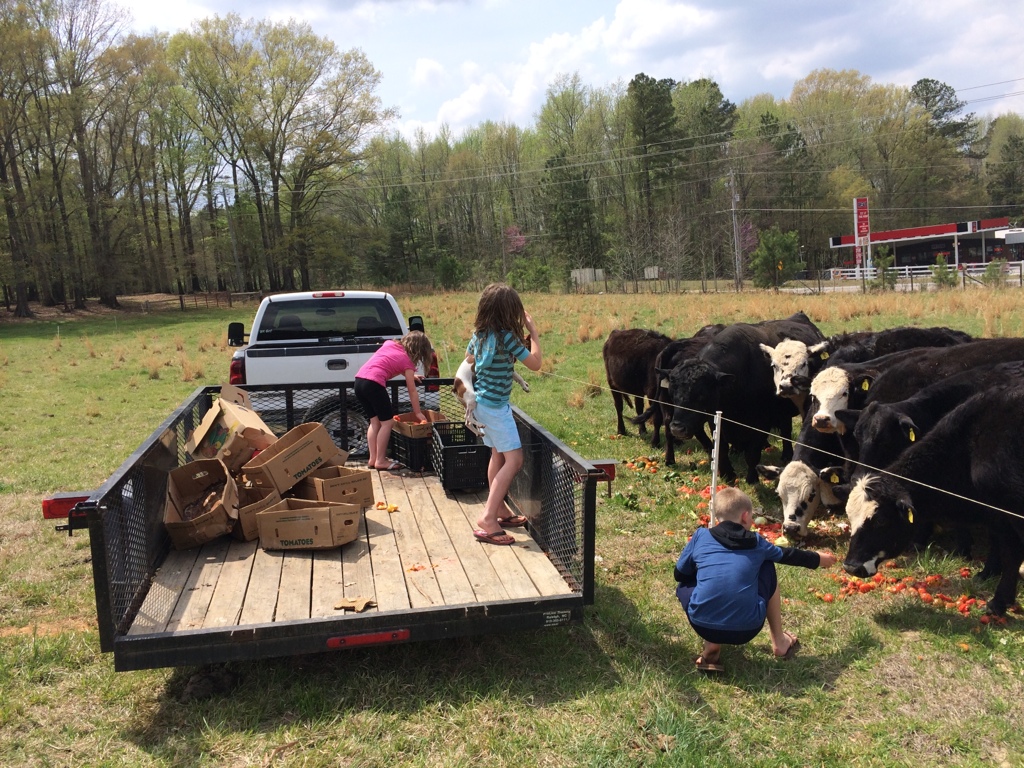
Sunday after church the kids and I fed the cows their daily ration of veggies. As always the cows and the kids both had fun. I don’t always have the kids to help and I certainly don’t get all of them that often. I was happy to have them all yesterday.
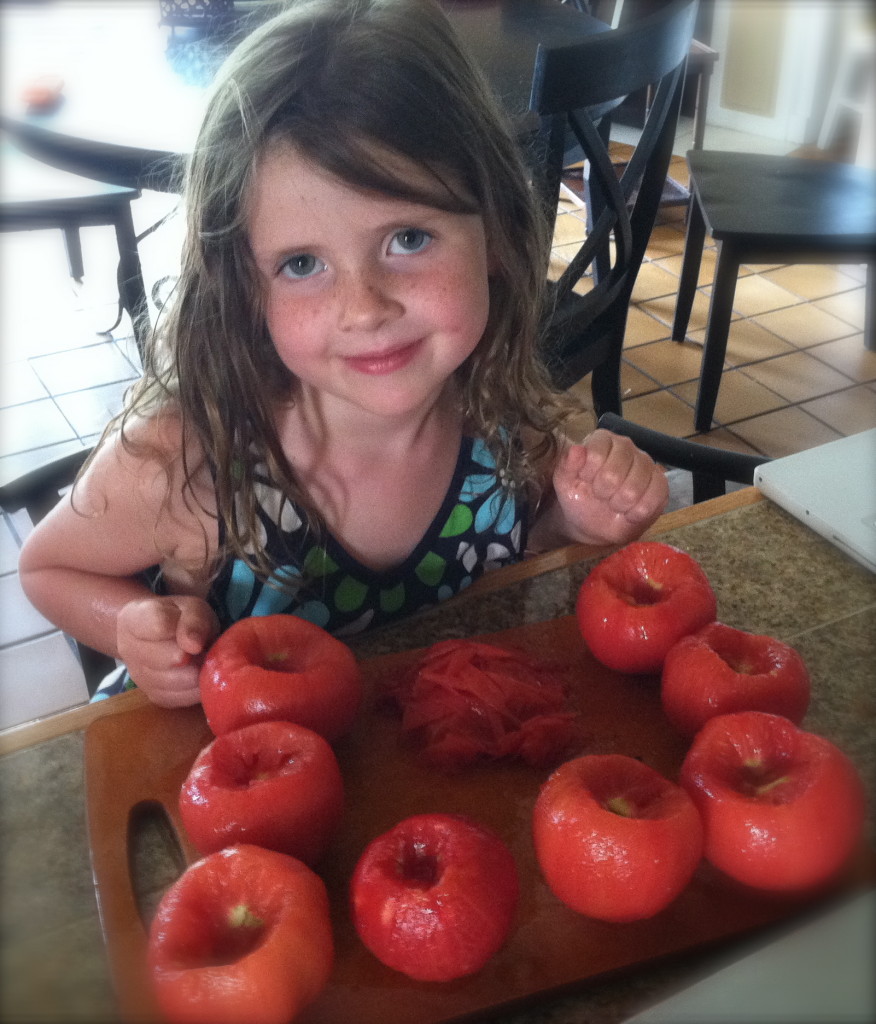
I came across a good article on kids and teaching them to use knives in the kitchen and then *gasp!* actually letting them go at it. There were some pretty interesting statistics about what teaching a kid to cook and to use knives in the kitchen means when the kids gets older, and no it doesn’t mean they can no longer count to 10 without taking their shoes off.
This is the Princess, at 6 years old, helping me can tomatoes. She peeled the tomatoes, then grabbed a razor-sharp chef’s knife and proceeded to quarter the tomatoes and get them ready to can. How did I know she was ready at six to handle a knife? First, she asked. Not the whiny can I have what you have (mom’s you can hear it in your head, right?) No, she asked if she could help me do what I was doing. I spent about 3 minutes showing her how to hold the knife, how to cut with the knife, and how to be safe with the knife. My famous safety lesson on knives is, “This knife is designed to cut meat and it’s really good at it. Do you understand? Yes. Ok, now what are you made out of?” Blank stare. “The answer is meat.” I’ve had children hand me the knife back after that explanation. They weren’t ready yet.
So after that quick demo, I watch her for five minutes and make sure she’s doing it right. Is she taking this serious? Is she playing or working? Is she keeping her mind on her business or getting distracted by her siblings? Any signs she’s not focused and the knife goes on the cutting board till she talks to her sister or smacks her brother. Mom comes in and tells her to do something? Sorry mom, she’s working and can’t, get someone else to do it (that goes a long ways folks, when you’re working your above kid duties and get treated like an adult).
Did The Princess ever cut herself? Yes, not that day but yes. She didn’t even cry (something she’s very proud of and still remembers). Did Bok Bok try cooking later and cut me in the process? Yes. Did either need stitches, a trip to the ER, a blood transfusion? No. If you work in the kitchen enough, you get cuts. You don’t die, and neither will your children.
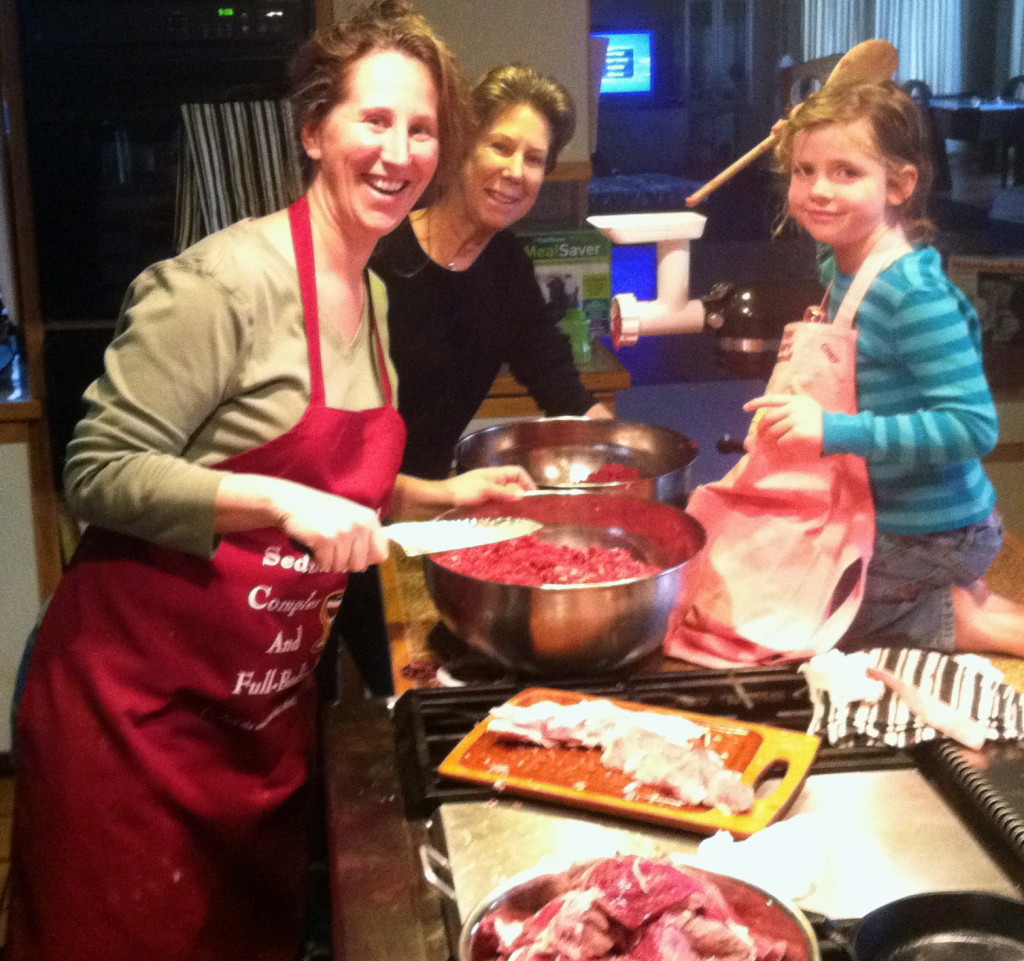
And of course what could be more long-lasting than cooking not only with mom but with Grandma!

Of course here at Ninja Cow Farm, we care not only about knives and cooking but also about the kids nutrition and wouldn’t dream of letting them actually plan a meal and then cook it. Who knows what kinds of unhealthy sugary things they’d make if mom wasn’t here to supervise, like say if she went to the beach and left the kids and dad to cook on their own. 🙂
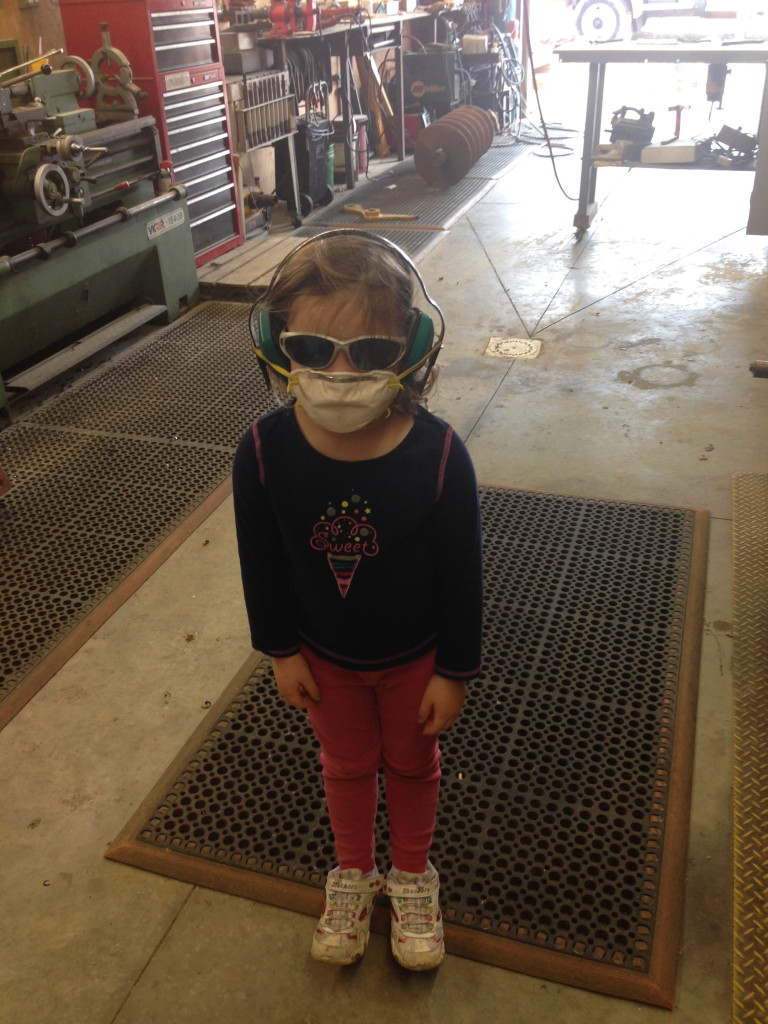
So cook with your kids. It’s good for them and good for you. Just remember, safety third!
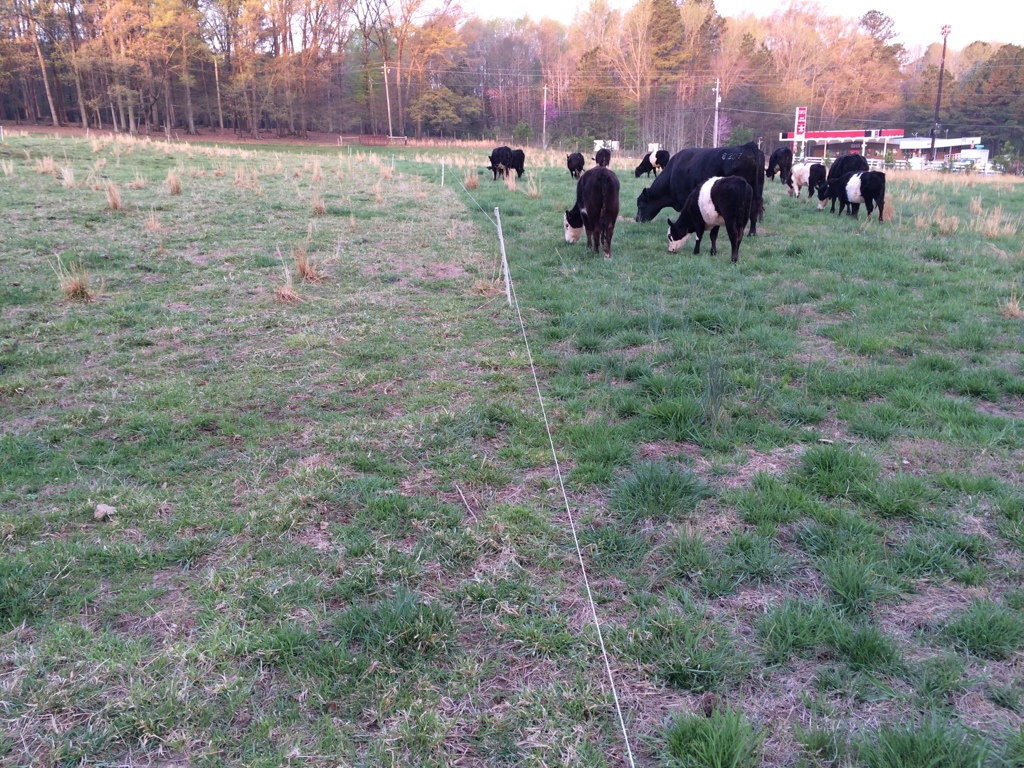
As you can see we are getting down to the road. In a few more days we’ll be down to the first pond and beginning to work our way back towards the house.
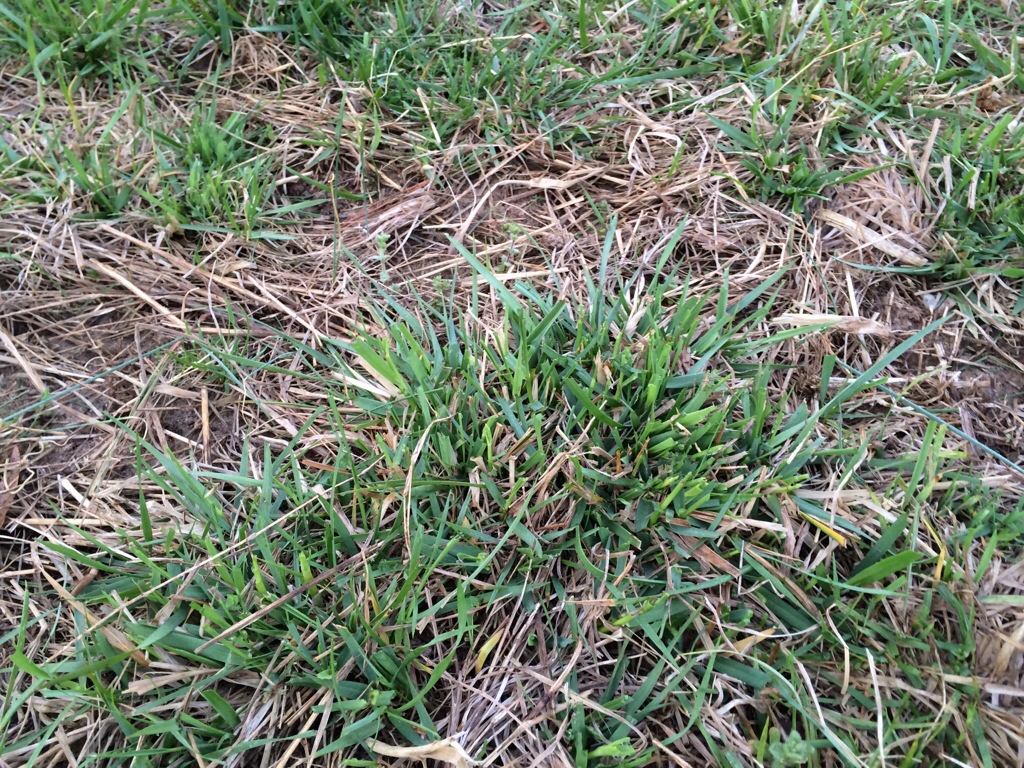
The grass is growing nicely. The sun and warmth is really having a great effect. However there still isn’t enough grass to keep the cows from eating more than I’d like.
Here you see that there are some areas that the cows haven’t eaten so it’s not like every bit of grass is gone or even eaten but much of the area has been grazed over not once but at least twice. The grass is recovering nicely after the cows rotate off of it but I’m looking forward to having enough grass that we are trampling the extra grass vs. eating 90% of what is there.
Here is one of our cows, Laser, grazing fresh grass yesterday. I was actually sitting on the mineral feeding, enjoying the morning and typing up yesterday’s blog post when she grazed right up next to me. I spent a few minutes watching her graze and talking to her (she doesn’t talk back, I’m not that crazy yet). I completely forgot I was holding a phone/camera and finally filmed just the last few seconds of her grazing closely. She was about 1 foot from me and munching merrily. It’s amazing what being quiet and calm around the cows does for their disposition.
Notice how when she eats she clips the top 1/3 to 1/2 of the grass stalks. This isn’t by accident or all that she can reach. With enough grass to eat in the paddock, this is all that the cows will eat, just the tops. This leaves the bottom 2/3 to 1/2 of the grass to regrow meaning that the grass bounces back like nothing happened and will be much taller and lusher the next time the cows come by. Also, the root system of the grass sheds some of its root system with this grazing which does all kinds of great things for the soil, but that’s another post. The grass and the roots regrow starting the next day as the cows move off of this paddock and onto the next one. This is what moving the cows every day is all about. If I left the cows on this paddock they would eat the grass right to the ground which is what happens with conventional grazing.
This is our second year of intensive grazing so it’s going to be interesting to see how the grass responds to spring coming into it with a much healthier root system and soil conditions. We built quite a bit of organic matter last year, and we’ve fed lots of hay and vegetables all winter which have added even more organic matter to the soil. We have another few weeks to let the fescue jump up and get mature, then we’ll be back to grazing and trampling for the rest of the season trying to build organic matter with the cows.
I’ve been using Facebook as my main communication tool for the blog since it’s inception a year ago. However recently Facebook has elected to only show a handful of a sites posts to subscribers rather than the full collection meaning much of what we post isn’t visible to you if you follow us on Facebook. I’ve heard it’s as low as 2% of your posts actually get out but that was on Facebook so who knows. 🙂
Since I know some of you cannot live without your morning pictures of tall grass and cow poop, I’ve spent a lot of time setting up a more robust email system where posts can be emailed to you if you sign up on our website. Each time we post an update you’ll get a short email telling you that a new post has been uploaded and you’ll get a preview of what it’s about. You can click on the link in the email and be taken directly to the post where you can see the pictures and read the entire article.
It should go without saying, but we don’t sell email lists, SPAM you, or do whatever other nefarious things that email people do. We just farmers trying to tell you a bit about what we do so feel comfortable that signing up is without risk and you can leave at any time. We do promise that we will send you pictures of cute cows and little piglets. Please take a minute and subscribe to our new email list.
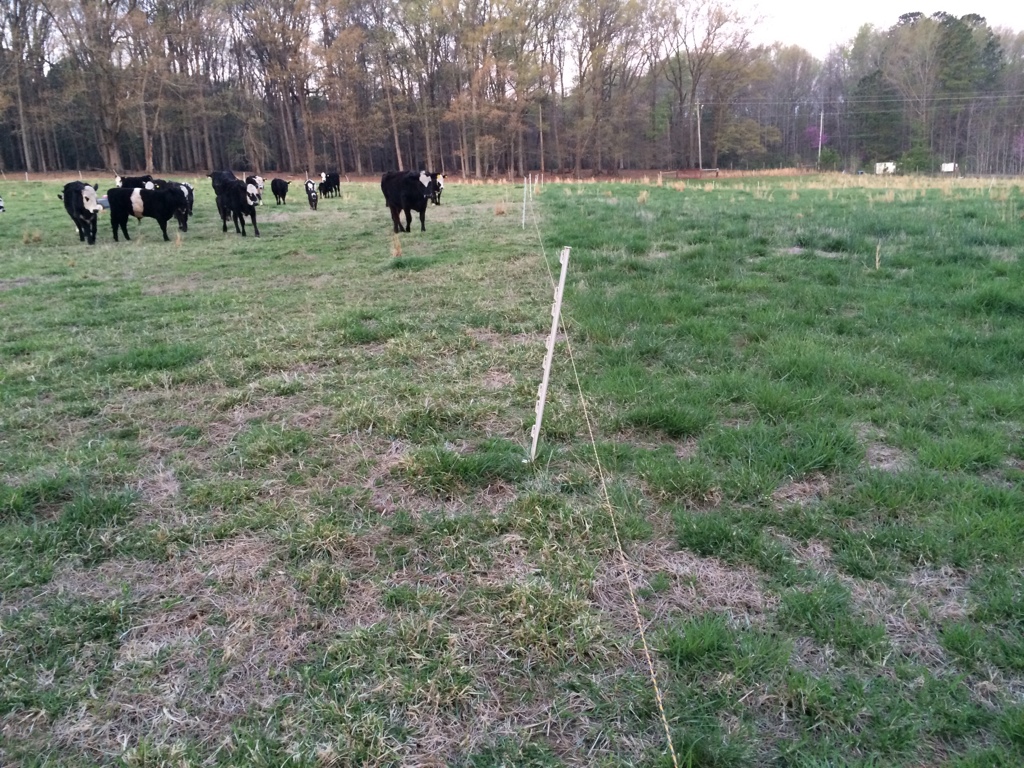
Finally we have a grass and grazing update. Here you see yesterday on the left, today on the right prior to moving the cows. As I write this the cows are quietly munching away on fresh spring grass. I had to get them out of bed to make their move but once they saw me they were ready for a new paddock.
The grass is pretty clumpy and at its tallest is about 8″ high. When we started the cows in grass paddocks a few weeks ago, the grass was barely growing so we’ve made good progress. Everything I’ve heard says that I needed to keep the cows off of grass till the grass was fully grown out, probably about where it is now or at least a few days from now. Unfortunately I ran out of hay with our terrible winter so the cows had to get what was out there. I started the cows on the paddocks that were untouched from last fall with plenty of dry matter and a very healthy stand of grass. Looking back at where the cows have been, the grass is recovering nicely. It will be interesting to see how the later grazed paddocks compare to the early grazed paddocks.
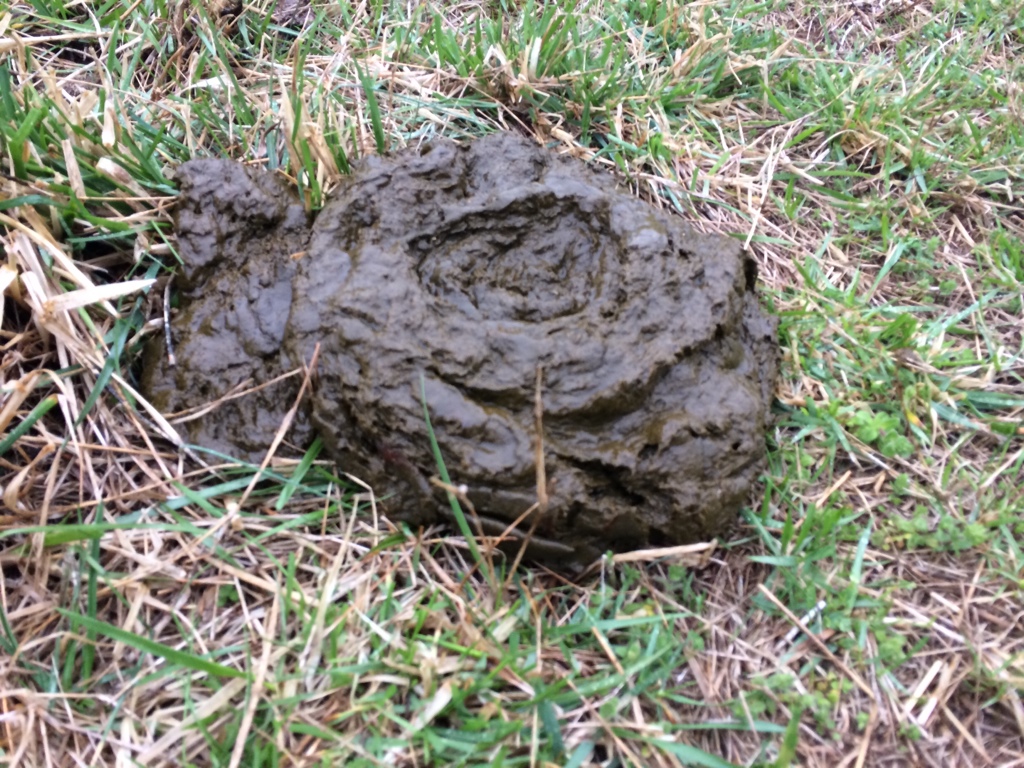
One thing I worried about with the cows getting on spring grass was loose stools. This is bad for the cows and comes from the change in diet from winter hay to high protein fresh grass. What we did is with the last of the hay we moved the cows to a new paddock with a bale of hay. The cows ignored the bale and mowed the grass the first day. However we left them for two days and on the second day the hot the bale. By having them switch back and forth we managed to have the cows keep their rumen in line and convert over without any problems. It took about a week and worked well.
So now that the truck was serviceable, the girls are again happy that we can go on rides and do farm work. And that’s how the truck stayed for a number of years. Until Aussie asked me to use my truck in her wedding this past March. She said I could maybe wash it but really, don’t do anything to it because she’s having a barn wedding so a tired, dirty old truck would be fine for what she had in mind. Yeah, not so much. After spending a few weeks trying to find someone to paint my truck, I finally asked Miguel and he told me he had a friend who painted vehicles and best of all, he’s not a mile from the farm. So began the process of stripping everything out of the truck to get it ready for paint. 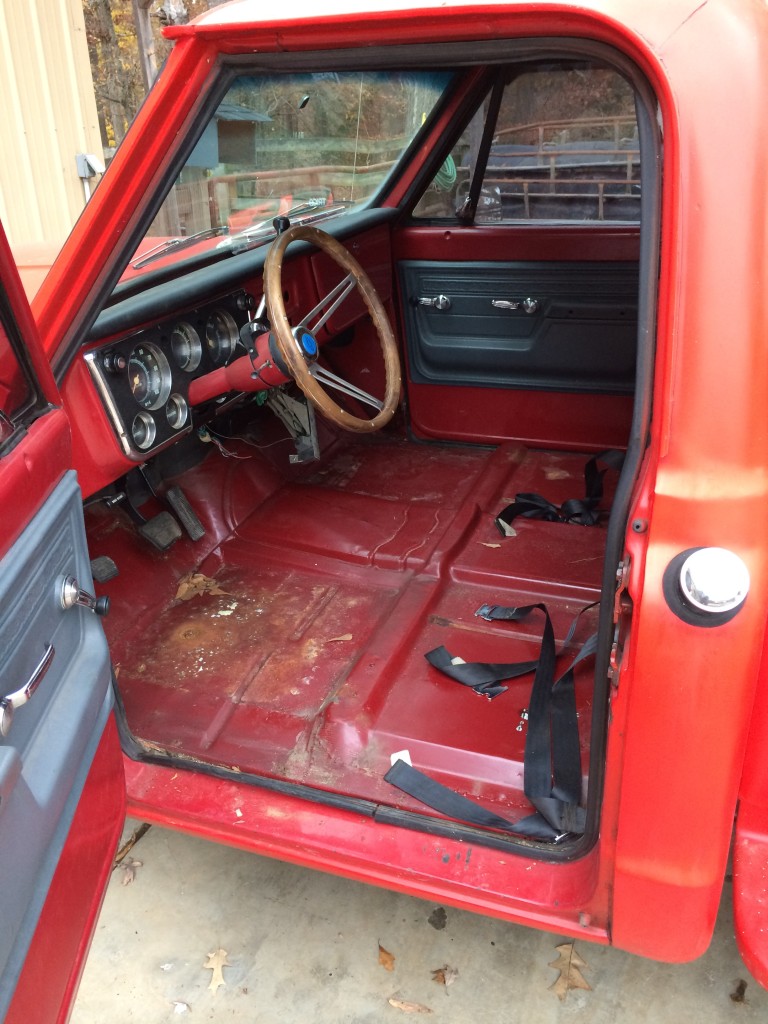

We then loaded the truck onto our hay trailer and took it to the paint shop to begin what turned into a three-month process.